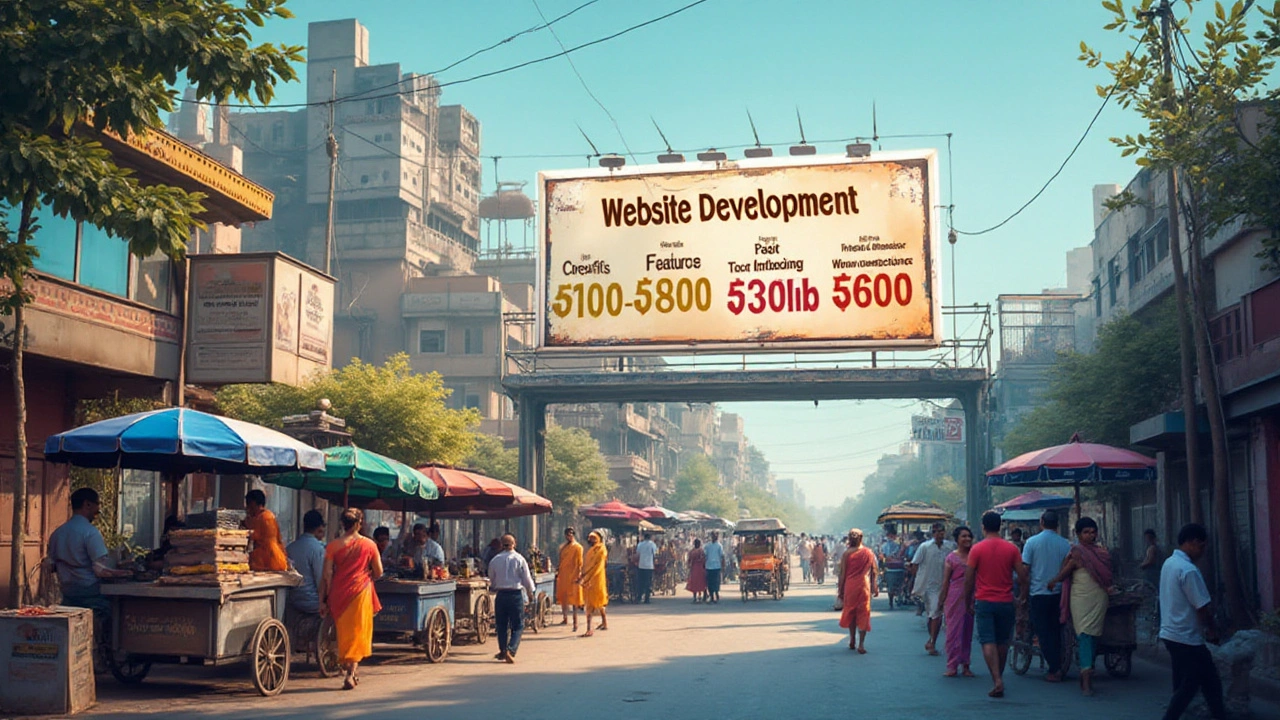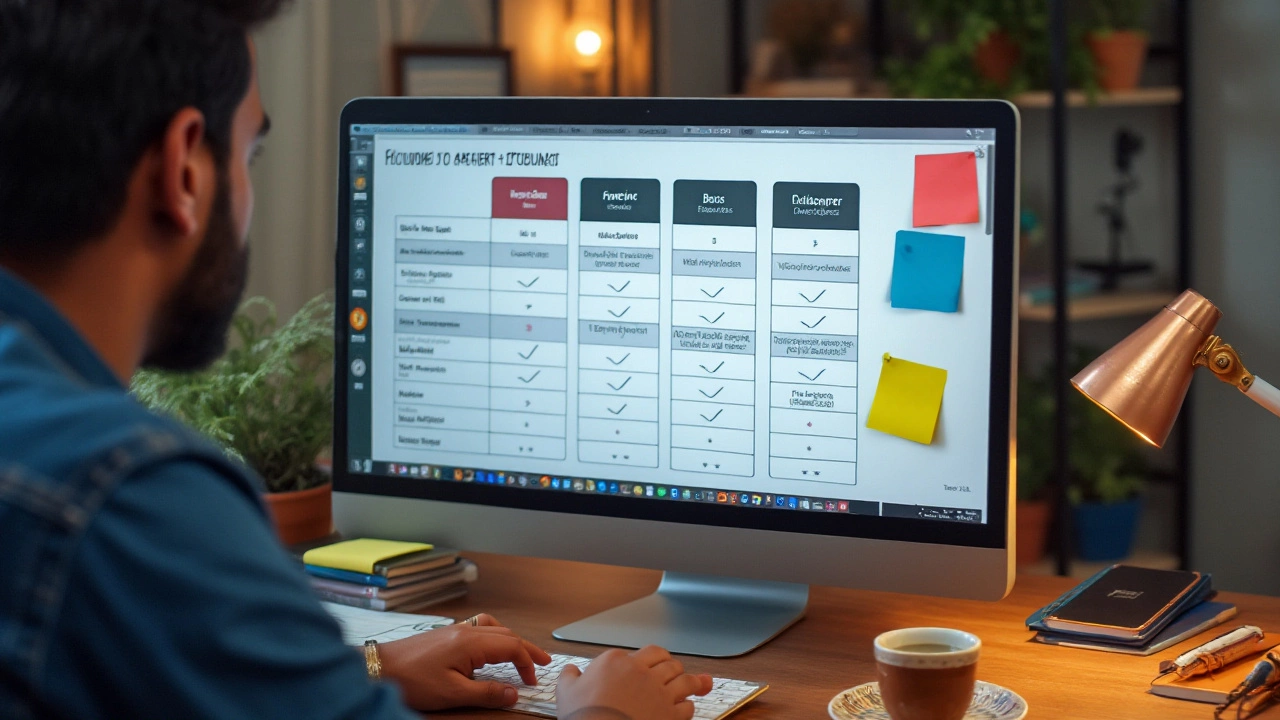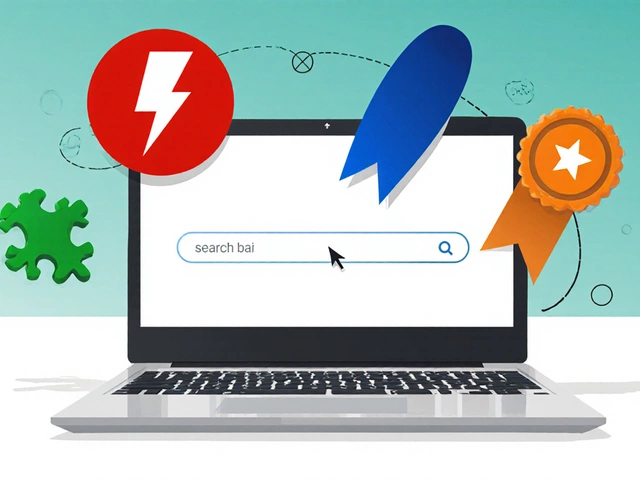In the digital age, having a compelling online presence isn't just an option, but a necessity for businesses and individuals alike. Whether you're starting a small blog or envisioning a vast e-commerce platform, the question that often arises is: how much does it actually cost to bring a website to life, especially in India? There isn't a straightforward answer, as several factors come into play.
From the complexity of your desired design to choosing between a freelancer or an agency, these decisions can significantly alter the overall cost. Let's delve into the details and explore the intricacies that determine how much you'll end up spending when you hire someone to build your website in India.
- Factors Influencing Website Development Costs
- Comparing Costs: Freelance Developers vs. Agencies
- Customization Options and Their Impact
- Tips for Choosing the Right Web Developer
- Understanding Website Hosting in India
Factors Influencing Website Development Costs
When diving into the world of web development, the cost to bring a site from a concept to reality is influenced by a myriad of factors. One of the primary considerations is the complexity of the design. A simple, static website with minimal pages and no dynamic features is naturally going to be less expensive than a large-scale e-commerce platform requiring payment processing, user authentication, and customer support functionalities. A basic informational site might cost anywhere between INR 10,000 to INR 50,000, depending on the Indian market pricing trends observed in recent years. On the other hand, a comprehensive online store or a custom web application could easily fall within the range of INR 1,00,000 to several lakhs. These figures can fluctuate based on the developer’s experience and location within India, as cities like Bangalore or Mumbai often see higher rates due to their tech-centric economies.
Another crucial element is the developer’s expertise and location. The disparity in fees is notable between a self-taught freelancer and a seasoned professional working with a well-established agency. Organizations tend to charge more due to the structured processes and variety of specialized skills they offer, including graphic designers, UI/UX experts, and QA testers, each contributing to a seamless end product. By contrast, freelancers offer more flexibility in pricing, often charging by the hour or project, making them a budget-friendly option for smaller businesses or startups. An agency’s involvement usually means a minor project could start at INR 50,000 and go up significantly, whereas a freelancer might charge anywhere from INR 500 to INR 2000 per hour.
Feature Set and Customization
A website’s intended features also play a pivotal role in shaping its cost. Are you looking for something out-of-the-box, or does your business require specific solutions, such as custom plugins or third-party integrations? Each additional feature demands more time and skill, which directly translates to higher expenses. Functionality like interactive media support, SEO optimization, and responsive design add layers of complexity that necessitate more development hours. For instance, ensuring your website boasts a mobile-friendly interface aligns with the latest SEO standards — an essential, as over 75% of internet traffic in India is now driven from mobile devices. This focus on mobile optimization calls for a responsive design approach and meticulous testing, both of which inevitably impact cost.
"Design is not just what it looks like and feels like. Design is how it works." — Steve JobsAlmost every website today involves some form of content management system (CMS) integration, whether it's WordPress, Joomla, or a custom-built solution. CMS platforms have made it easier to manage website content, but incorporating and customizing these systems demands expertise. Customization within a CMS can come with expenses tied to the depth of changes desired, such as bespoke templates or advanced content functionalities.
On top of these core aspects, there are hidden or indirect costs that one might overlook initially, such as domain registration, SSL certificates, and the choice between shared or dedicated hosting plans. It’s essential to consider whether these elements are included in the developer's quoted price, as they could easily tack on a few thousand rupees over the course of a year. Understanding these diverse factors allows businesses to set realistic budgets and expectations prior to their development journey, optimizing both financial resources and the potential success of their digital presence.
Comparing Costs: Freelance Developers vs. Agencies
Choosing between a freelance developer and an agency can substantially impact your website budget and the final product. Freelancers typically offer a more cost-effective option, particularly appealing to startups and small businesses. Their pricing flexibility is an asset, with rates ranging from as low as INR 10,000 for basic websites to INR 50,000 for more complex functionalities. This approach can be advantageous if you have a modest budget and a relatively simple project.
However, there are trade-offs to consider. Freelancers often juggle multiple projects, which can delay timelines. They may lack specialized skills across all areas required for comprehensive projects. While many are multitalented, one individual might not have the breadth and depth of expertise available within an agency. Consulting agencies, on the other hand, promise a team of specialized professionals—from designers to SEO experts—ensuring a holistic approach to web development.
Advantages of Hiring an Agency
When it comes to agencies, the costs are predictably higher, starting from around INR 50,000 and reaching upwards to several lakhs, depending on project requirements. An established agency brings reliability and the assurance of a structured process. They excel in handling large-scale projects requiring cohesive teamwork and diverse skills. Agencies can afford to offer post-launch support, maintenance, and updates as part of their package, providing long-term reliability.
"Choosing the right partner—be it a freelancer or an agency—depends on your project scope, budget constraints, and long-term business strategies," says a renowned industry expert in website development. – Tech Innovations Journal
In India, the choice is not black and white. The tech ecosystem here supports an array of talented freelancers and dynamic agencies. While agencies provide a strong structure and full-stack support, freelancers offer personalized interaction, often resulting in a more intimate understanding of a client's vision. Each path caters to specific needs and expectations, hence knowing your project and budget constraints is essential in making the right decision.
Cost Analysis Using Data
A survey conducted in 2023 revealed that, on average, companies that opted for freelancers saved about 20% on their web development costs compared to those that chose agencies. This financial aspect is crucial for emerging businesses working on a tight budget. However, the survey also pointed out that 65% of those who worked with agencies were more satisfied with the post-launch support, indicating that the additional investment often pays off in service and quality.
| Service Provider | Average Cost (INR) | Reliability |
|---|---|---|
| Freelancers | 10,000 - 50,000 | Varies |
| Agencies | 50,000 and above | High |
Ultimately, deciding between a freelancer and an agency should be a well-thought-out choice. Assess the complexity of the site you're aiming for, your budget limits, and whether you foresee needing ongoing changes and support down the line. With these considerations in mind, you'll better navigate your way toward achieving a strong digital presence that aligns with your goals.

Customization Options and Their Impact
Customizing your website is like putting your personal stamp on your business’s online presence. Whether you're opting for a simple blog layout or a detailed e-commerce platform, the impact of customization is profound. Let's delve into how these options can shape not only the look and feel but also the cost of your web development project. A basic website starts with standard templates and plugins that are freely available. These are cost-effective and quicker to implement, but they might not offer the unique flair or functionality you're looking for. Choosing to customize means that you go beyond the basics, incorporating custom design elements, unique fonts, special features such as booking plugins, or interactive elements that cater specifically to your audience's needs.
For businesses looking to make a significant impact, advanced customization can include integrating complex systems like a customer relationship management (CRM) tool, shopping carts for e-commerce, or multi-language support. Each of these additions requires more time and expertise, which directly affects the overall budget. According to Sam Peters, a web development expert, "The extent of customization needed can easily double or triple costs, compared to a basic template site." Customization also extends to the backend infrastructure. Choosing a content management system (CMS) like WordPress can offer a good level of flexibility, whereas completely custom-built solutions provide higher performance, scalability, and security—albeit at a higher cost.
Let's take an example: say you're building an e-commerce site. You might need custom images, possibly shot by a professional photographer to highlight your products with high-resolution photos that entice customers. Then, you'd want to implement a unique checkout process, loyalty programs, and maybe even high-end data analytics to gain insights into customer behaviors. Each of these bespoke features adds significant weight to not just the cost, but the timeline for project completion.
"To stand out in a crowded digital marketplace, customization isn't just beneficial—it’s essential." - Sumeet Jain, Digital Marketing Analyst.
Considering the mobile-first world we live in, another area with heavy customization impact is responsiveness design. Websites need to be as functional and aesthetically pleasing on mobile devices as on desktops. Developers need to ensure that all custom elements are optimized for any screen size without compromising speed or performance, adding to the intricacy and potential costs. The team you hire—whether an individual freelancer or a large agency—must outline the scope of customizations well in advance and map out how each impacts the budget. It's crucial to ask for a detailed quote and timeline that considers all the desired custom elements to avoid surprises. This level of planning is vital, especially if you're keeping an eye on the bottom line.
If we consider the market standard, custom web development projects in India can range from approximately INR 20,000 for simple sites to over INR 200,000 for complex, customized platforms. The exact cost pivots on your specific choices and needs. Time invested in these customized elements increases correspondingly, with certain advanced features potentially taking weeks or even months to perfect. Investing in the right web development partner who understands your vision and has the technical prowess to bring it to life is imperative. With the right approach, every penny spent on customization can translate into increased engagement, extended reach, and, ultimately, greater business success. Always ensure this step aligns closely with your business goals to get the intended return on investment.
Tips for Choosing the Right Web Developer
When it comes to crafting your digital identity, selecting the right web developer can make or break your project. A well-developed site not only ensures functionality but also attracts visitors and retains customers. So how do you make the best choice amidst a sea of options? First and foremost, experience holds undeniable value. Check the developer's portfolio; it reveals their ability to translate a vision into reality. Look for versatility in their work — a variety of web development styles and technologies reflect adaptability, a crucial trait in this dynamic field. Be sure to verify their familiarity with the specific platform you wish to use, especially if it's particular to India hosting services.
Another important aspect is to gauge their understanding of your business. A developer who takes time to comprehend your goals and target audience is more likely to deliver a product that's aligned with your vision. Communication skills are often underrated, yet they're vital. Clear lines of communication mean you can express your ideas and concerns adequately, leading to fewer misunderstandings and a smoother workflow. It's often beneficial to schedule an initial meeting or call to assess these qualities.
Consider the balance between cost and value. While it's tempting to opt for the cheapest option, remember that quality work doesn’t come cheap. When reviewing a proposal, assess what’s included in their pricing—does it cover design, hosting, testing, and post-launch support? Sometimes, spending a little extra ensures you avoid future headaches. {'
'}According to CodeUpStart, "A low bid may indicate a lack of understanding of project requirements or an intention to charge additional fees down the line." {''}
References and reviews provide essential insights. Don't shy away from requesting testimonials from previous clients; real-world experiences often reveal deeper truths about reliability and professionalism. There’s also wisdom in tapping into your network. Recommendations from peers who've undertaken similar projects can ease your decision process significantly.
Lastly, technological prowess is non-negotiable. Ensure the developer is up to speed with the latest advancements and security protocols. Given the rise of cyber threats, a strong foundation in cybersecurity is crucial for protecting user data. Don’t hesitate to inquire about their practices, whether through direct questioning or assessing if they've incorporated these measures in past projects already present in their portfolio.
Following these steps will help you zero in on a developer who aligns with your vision, budget, and technical needs. Remember, the right partnership paves the way for a successful website that not only looks great but functions impeccably. Your website is more than a placeholder on the internet; it’s a powerful representation of your brand, and hiring the right developer is your first step to making an impact online.

Understanding Website Hosting in India
In the vibrant world of web development, choosing the right website hosting option is like picking the foundation for your online presence. India, with its rapid technological advancements and a burgeoning IT industry, offers a plethora of hosting solutions tailored to fit different needs. Whether you're a local startup or an international enterprise, understanding the nuances of hosting in this diverse market is crucial. The price range for hosting services in India varies widely, often catering to everything from simple personal blogs to robust e-commerce platforms. Cost can be influenced by factors like bandwidth, storage, server speed, and customer support. Platforms like HostGator, Bluehost, and GoDaddy are quite popular, each offering a range of plans targeted at different user groups.
Let's look deeper into what makes web hosting in India unique. Firstly, the rise of data centers in major cities like Mumbai and Hyderabad has decreased latency for local users, significantly improving website performance. Moreover, many Indian hosting providers are now offering renewable energy-powered data centers, adding an environmentally friendly choice to your list of options. The rise of affordable cloud solutions has also revolutionized hosting, providing scalable options for dynamic websites and applications.
Types of Website Hosting
When considering types of hosting, you'll encounter several options: Shared hosting, Virtual Private Server (VPS), Dedicated hosting, and Cloud hosting. Each comes with its price point and set of advantages. Shared hosting is often the least expensive, ideal for small businesses and personal sites that anticipate low to moderate traffic. VPS gives more control and is suitable for medium-sized businesses that need to run complex applications. Dedicated hosting offers top-tier performance, often chosen by large organizations operating high-traffic platforms. Meanwhile, Cloud hosting offers scalability, allowing your site to grow seamlessly with expanding user demands."In 2024, the Indian web hosting market is projected to grow at a CAGR of 13.5%, driven by increased adoption of cloud services and digital transformation across sectors," remarks a report from MarketsandMarkets.
When choosing a hosting provider in India, pay attention to factors such as uptime guarantees, which ensure your site remains available and operational as consistently as possible. Customer service availability is another important aspect, particularly if you're unfamiliar with the technicalities involved in website maintenance. Most leading providers offer 24/7 customer support, so you can resolve issues quickly no matter the time zone. Opt for a hosting plan that offers easy-to-use control panels, with enough flexibility to meet your current and future needs.
Security should be a priority, too. Look for providers that offer SSL certificates, DDoS protection, and regular backups as part of their hosting package. Optional features like automatic software updates and malware scanning add an extra layer of safety. Lastly, don't overlook the importance of scalability and the ability to upgrade your plan easily as your business grows. Investing in a host that allows for seamless upgrades, accommodating increased traffic without a hitch, is key to ensuring long-term success.
Conclusion
India's hosting landscape in 2024 is robust, catering to a mix of local and international needs with both economical and premium services. Whether you're on a tight budget or aiming for high-grade performance, understanding the key elements of website hosting can pave the way for choosing the perfect solution that fits your unique requirements. Seamless growth, enhanced performance, and reliable support make the Indian market an attractive destination for website hosting services today.



